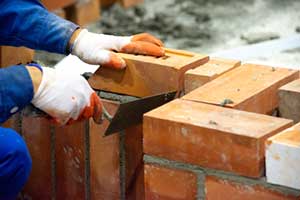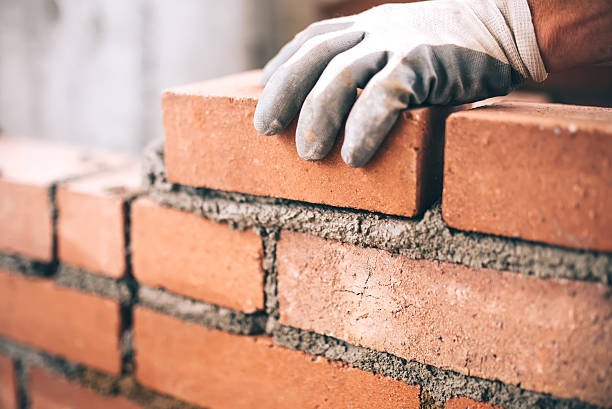Trustworthy Tuckpointing Services for Improving Block and Stone Surfaces
Trustworthy Tuckpointing Services for Improving Block and Stone Surfaces
Blog Article
Unlocking the Keys of Sustainable Stonework Construction Practices for Eco-Friendly Buildings
Among the myriad techniques to eco-friendly building, lasting masonry construction stands out as a tried and true and resilient approach that holds a wide range of untapped possibility. From the selection of products to ingenious building and construction methods, the tricks to attaining sustainability within stonework construction are complex and appealing.
Benefits of Sustainable Stonework Building
Embracing lasting stonework building and construction practices not just lowers environmental effect but additionally offers long-term economic advantages to builders and communities. By using products like recycled blocks, blocks, and rocks, builders can considerably lower the carbon footprint of their projects while promoting source effectiveness. In addition, sustainable stonework building and construction strategies, such as proper insulation and thermal mass properties, can enhance power effectiveness within buildings, leading to lowered functional expenses in time.
In addition, the resilience and strength of stonework structures add to long-term financial benefits. Buildings created using sustainable stonework methods typically need less maintenance and repair service, converting to cost financial savings for builders and homeowner. The long life of stonework products also makes sure that frameworks remain stable and safe and secure, lowering the need for constant improvements or replacements.
Eco-Friendly Masonry Materials
Making use of eco-friendly stonework products is a crucial step towards improving the sustainability of building and construction methods and minimizing ecological effect while taking full advantage of long-term economic advantages. Lasting masonry materials are sourced, generated, and utilized in a fashion that reduces total environmental impact. Sustainable concrete obstructs incorporate recycled aggregates and might feature enhanced insulation buildings, contributing to energy effectiveness in structures.
In addition, all-natural products like adobe, rammed earth, and straw bales supply superb thermal mass homes, decreasing the requirement for heating and cooling energy. These materials are usually in your area readily available, advertising regional economic climates and lowering transportation-related carbon exhausts. By selecting environment-friendly masonry products, building projects can substantially decrease their environmental impact and contribute to the creation of healthier, extra sustainable developed settings.
Energy-Efficient Stonework Strategies
Power performance plays a critical duty in boosting the sustainability of stonework building methods. By carrying out energy-efficient masonry methods, building contractors can considerably lower the general power intake of a structure, bring about lower operational prices and a smaller sized environmental impact. One key energy-efficient stonework technique is the use of thermal mass, which entails incorporating thick products like concrete or block into the structure's structure to soak up and save warmth. This aids regulate indoor temperatures, reducing the requirement for mechanical heating and cooling systems.

Innovations in Sustainable Stonework
Current developments in lasting stonework techniques have brought about innovative methods that are reshaping the construction industry. One such technology is the advancement of self-healing concrete, which utilizes bacteria embedded within the concrete to recover fractures autonomously. This development not only minimizes maintenance costs yet likewise boosts the durability of stonework frameworks, adding to their sustainability.
Another remarkable advancement is using recycled accumulations in masonry building and construction - masonry contractor. By integrating materials such as smashed ceramic waste or recycled glass right into concrete blends, a fantastic read home builders can decrease the site ecological effect of construction projects while keeping architectural integrity. This method not only draws away waste from land fills yet likewise saves all-natural resources, making it a key improvement in sustainable stonework building and construction
Furthermore, the integration of electronic design devices, such as Structure Info Modeling (BIM), is revolutionizing the way stonework structures are intended and constructed. BIM allows for even more specific computations, decreased product waste, and improved power effectiveness, ultimately bring about more sustainable building practices. These developments jointly signify an appealing future for sustainable masonry construction in the age of green buildings.
Future Trends in Stonework Sustainability
With the ingenious strides made in lasting stonework practices, the future fads in stonework sustainability are poised to more change the building and construction market. One of the vital trends forming the future of stonework sustainability is the raised combination of technology. Developments such as Structure Info Modeling (BIM) and virtual reality simulations are being utilized to enhance stonework building and construction processes, leading to reduced product waste and improved energy performance in structures.
Additionally, the development of unique sustainable products is set to play a considerable role in improving the eco-friendliness of stonework building. masonry contractor. Innovations like self-healing concrete, recycled aggregates, and bio-based binders are acquiring traction for their capability to decrease ecological impact while maintaining structural integrity

Verdict
To conclude, sustainable stonework building and construction techniques supply many advantages for environment-friendly buildings. By using green materials and energy-efficient methods, masonry can contribute to an extra lasting built environment. Developments in lasting masonry are continually being developed to better improve the ecological efficiency of structures. Looking towards the future, the trend of masonry sustainability is expected to grow, resulting in even more eco-friendly and energy-efficient building and construction practices in the years to come.
Report this page